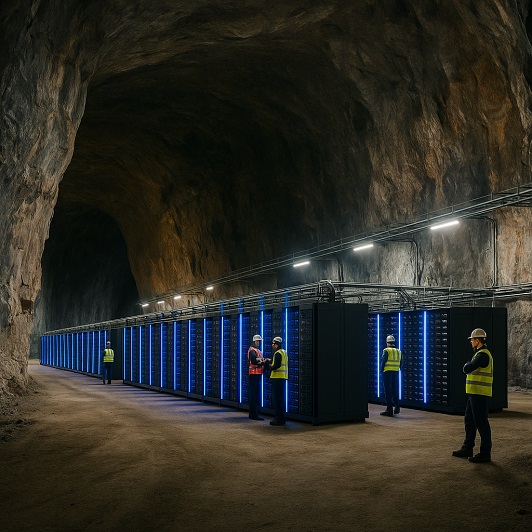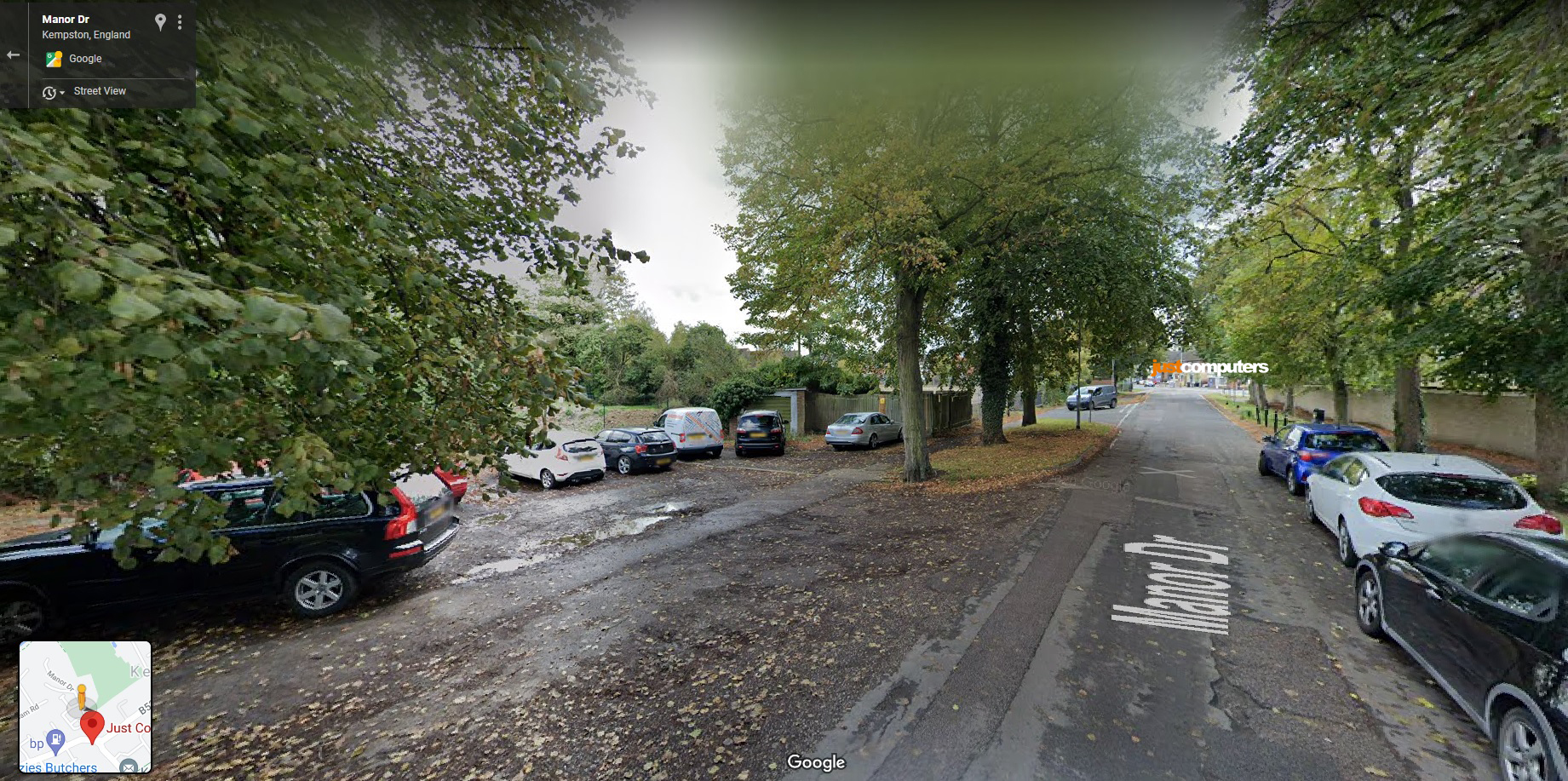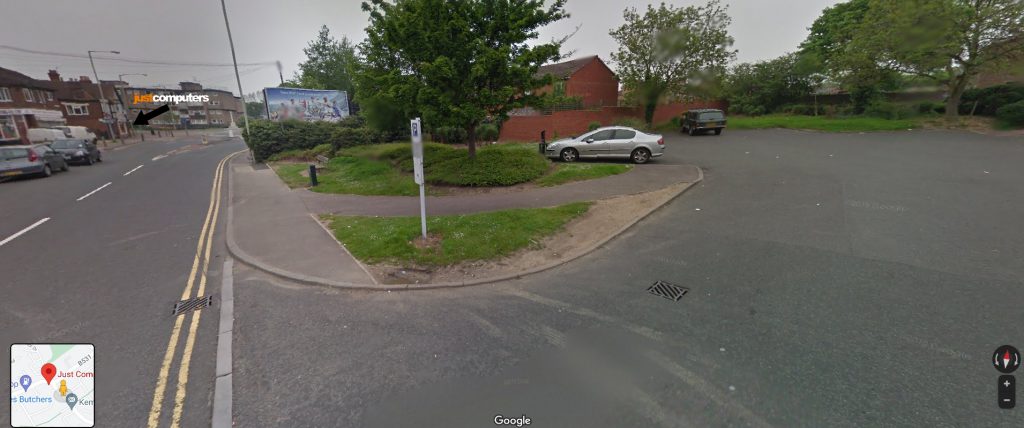
Europe’s first full-scale data centre built inside a working mine in northern Italy is being hailed as a landmark in sustainable digital infrastructure, combining high-performance computing with energy efficiency and circular use of underground space.
Who’s Behind the Project and Where Is It?
The project, known as Trentino DataMine, is being developed in the San Romedio dolomite mine in Val di Non, deep in the Dolomites of northern Italy. The mine is owned by Tassullo, a century-old company that extracts dolomite for use in construction materials. Around 100 metres below ground, in a vast network of stable, dry rock chambers, the site has long been used to store apples, cheese, and wine, thanks to its naturally cool and constant temperature of around 12°C.
Trentino DataMine is led by the University of Trento through a public-private partnership involving several Italian firms, including Dedagroup, GPI, Covi Costruzioni, and ISA. Together they have formed a limited company to design, build, and operate the facility. The €50.2 million project is partly financed by Italy’s National Recovery and Resilience Plan (PNRR), which channels EU Next Generation funds to sustainable and innovative developments. Around €18.4 million of the funding comes from public sources, with the remainder provided by private IT and construction companies.
Intacture – 5 Megawatts
The new facility, called Intacture, will provide around 5 megawatts of computing capacity. However, its focus is not just storage or cloud hosting, but also advanced computing for research, artificial intelligence (AI), cybersecurity, and healthcare data. The University of Trento describes the project as a “strategic centre for innovation, sustainability and advanced technology” designed to support high-performance computing, edge computing, and quantum cryptography research.
Why Build a Data Centre Underground?
The decision to locate a data centre inside a mine has both some technical and environmental logic behind it, i.e., cooling, energy use, security, and land availability are all central to the reasoning.
Traditional data centres expend large amounts of electricity on cooling systems to prevent servers from overheating. In Trentino, the natural rock temperature, steady at about 12°C, provides passive cooling without the need for large chillers or water-based cooling towers. That dramatically cuts electricity consumption and eliminates the water use associated with many conventional data centres. Dedagroup’s Chief Technology Officer, Roberto Loro, said the site offered “a combination of physical security with low environmental and energy impact.”
Security is another key driver. For example, the mine’s dolomite rock is naturally dry and geologically stable, offering protection from earthquakes and floods. Also, being encased in solid rock shields the site from electromagnetic interference and physical threats such as explosions or extreme weather. Giuliano Claudio Peritore, President of the Association of Italian Internet Providers, has described the project as “absolutely fascinating”, noting that “we think of a mine as being a humid place, therefore not suited to a data centre. Instead, in Trentino we have something special because the dolomite rock is absolutely dry, in a stable mountain.”
The underground setting also saves land. For example, rather than paving over new industrial plots or farmland, the data centre reuses existing voids created by mining operations. In doing so, it preserves surface landscapes while putting unused underground volumes to productive use, which is a clear advantage in regions where land use and visual impact are increasingly sensitive issues.
How the Mine Is Being Transformed
It should be noted that the mine is actually still active, and the excavation work for the data centre was carefully integrated into the ongoing extraction of dolomite. Around 63,000 tonnes of rock (about the volume of 20 Olympic swimming pools) were removed to create the chambers for the facility. The extracted dolomite is being reused by Tassullo to manufacture eco-friendly building materials, creating a circular loop between extraction, construction, and digital infrastructure.
80% Underground
Roughly 80 per cent of the data centre is underground, with the rest of the space used for offices, reception, and security areas near the surface. Around 60 workers have already installed 50 kilometres of fibre and electrical cabling, together with 3 kilometres of ventilation ducts and several power generators. The design relies on natural cooling from the rock, with mechanical ventilation only needed for air circulation.
Coexistence of Industries
What essentially makes the site unique is the coexistence of digital and agricultural industries within the same underground system. For example, the mine has long stored local apples, wines, and Trentingrana cheese. The servers’ waste heat can now be channelled to warm other sections of the mine, while nearby storage operations requiring refrigeration can benefit from the cooling infrastructure. Dedagroup’s Loro highlighted the potential for collaboration, saying: “Those who need heat can use the heat we produce.” It creates a self-balancing ecosystem in which energy flows are shared between food logistics and digital computing.
Sustainability and Regional Strategy
The Trentino DataMine could be said to embody several sustainability principles, i.e., reducing energy and water use, recycling material outputs, and avoiding new land consumption. It also fits into the wider strategy of transforming the region into a digital innovation hub under the EU’s green and digital transition agenda.
By locating advanced computing capacity in northern Italy, the project also supports Europe’s ambition for greater digital sovereignty. Sensitive data in fields such as healthcare, AI, and finance can be processed locally, under European data governance frameworks, instead of being sent to large foreign-owned cloud providers. Italy’s Minister for Enterprises, Adolfo Urso, called the mine “a new hub for public-private collaboration, research and regional development”, adding that it shows how unused underground spaces can drive both innovation and sustainability.
Economically, the project is expected to pay for itself over 15 years and generate skilled employment across data management, engineering, and scientific research. The operators also see it as a blueprint for other European regions where disused or stable underground sites, such as salt mines or tunnels, could be converted into low-impact data infrastructure.
Potential Challenges and Practical Considerations
Despite the clear environmental advantages, underground data centres bring a unique set of challenges. For example, connectivity must be maintained through kilometres of tunnel, and redundancy has to be built in to guarantee service uptime. Engineers have installed multiple fibre paths to ensure data continuity, but protecting those cables from vibration and mining equipment remains an ongoing task.
Also, maintenance logistics are more complex than in standard above-ground facilities. Technicians must move equipment through controlled tunnels, and ventilation must ensure safe air quality at all times. Emergency procedures, power backups, and fire safety systems must be adapted for enclosed spaces.
There are also environmental balance issues. While heat recovery is a promising concept, the actual usability of server heat depends on matching the right temperatures to neighbouring processes. Any imbalance could lead to excess heat that still needs to be vented, which would limit the energy savings. Regulators will also monitor that operations within the mine, especially the storage of food products, are not affected by the digital facility’s heat or air circulation.
Tailored Rules Needed?
For policymakers, Trentino DataMine raises new regulatory questions. Data centres built inside industrial extraction sites may need tailored rules covering safety, environmental protection, and labour standards. Italy’s authorities have already classified the facility as a “green” project under the PNRR, but its mixed use means future projects of this type will need careful legal frameworks.
Stakeholders
For the Trentino region, the DataMine offers a new model of economic diversification. For example, it links high-tech sectors with traditional industries like agriculture and construction, keeping the value of public investment within the local economy. The University of Trento sees the facility as a nucleus for research in AI, edge computing, and cybersecurity, potentially attracting both private and public partners from across Europe.
For the data-centre industry, it offers a live test of how underground environments can cut cooling energy use and improve physical resilience. With European data-centre electricity demand expected to rise by 28 per cent by 2030 according to the European Commission, efficiency measures like this are becoming increasingly important.
For local industries, proximity to computing power could bring new advantages. Agricultural firms that already store produce in the mine could benefit from AI-driven monitoring or predictive logistics systems hosted just a few metres away. For construction firms, the circular reuse of dolomite reinforces Trentino’s positioning as a region of sustainable materials innovation.
Other Unusual Data-Centre Locations Around the World
The Trentino site is the first in Europe built inside a working mine, but it joins a small group of projects exploring alternative environments for digital infrastructure. Others include, for example:
– In Norway, the Lefdal Mine Datacenter occupies a former mineral mine on the country’s west coast. It uses hydropower and draws cold water from a nearby fjord for cooling, achieving extremely low energy consumption. The operators claim near-zero freshwater use and a minimal environmental footprint.
– Microsoft has tested underwater data centres in its Project Natick experiment off the coast of Scotland’s Orkney Islands. The company submerged 864 servers in a sealed pressure vessel on the seabed and found that failure rates were one-eighth of comparable land-based systems, largely due to the stable, cold environment.
– Other developers are exploring floating or underwater data pods in coastal cities, though regulatory and maintenance challenges remain significant. In the United States, proposals to deploy subsea AI processing capsules in San Francisco Bay have drawn mixed reactions over environmental and safety concerns.
Across these experiments, the goal is broadly the same, i.e., to find a workable way to reduce the environmental footprint of data processing, improve efficiency, and find new ways to integrate computing into existing or underused spaces. The Trentino DataMine, therefore, adds a new European example to that list, turning an active dolomite mine into a shared underground ecosystem where technology, agriculture, and sustainability coexist.
What Does This Mean For Your Organisation?
What emerges from Trentino is not just an unusual engineering choice but a possible template for how digital capacity could be added in places that do not want more noise, heat, land pressure, or surface build-out. The operators are arguing that a mine with a constant 12°C climate can offer something that a standard warehouse on an industrial estate cannot, i.e., passive cooling, protection from physical and electromagnetic threats, and almost no demand for new above-ground land. In sustainability terms that’s important because data processing is on track to become one of Europe’s most resource-intensive activities, particularly with the growing computational load of AI and high-performance analytics.
At the same time, this model is clearly not plug-and-play. Keeping a live data centre running inside an active mine brings engineering risks that conventional builds do not face, and regulators will have to decide how to classify mixed-use underground sites that are at once storage depots for food, sources of construction materials, and high-security computing hubs. The fact that Trentino DataMine is being backed through national recovery funds and positioned as “green” is significant, but it also raises expectations. If this is going to be treated as a blueprint then it will have to prove that waste heat recovery, energy reuse, and non-destructive land use work in practice and not just on paper.
For UK businesses the story is relevant on several levels. For example, energy cost and regulatory scrutiny around data use are rising in the UK, while AI workloads and data retention obligations keep expanding. British organisations that depend on data-heavy services, including finance, healthcare, manufacturing and logistics, are already looking for hosting models that are both affordable and politically acceptable. A site like Trentino shows one possible direction for future colocation and high-performance compute: hardened, local, energy-efficient, physically sovereign, and directly tied into regional industries rather than sitting in anonymous hyperscale campuses. That matters for any UK company that is under pressure to evidence sustainability credentials to clients, boards, and regulators while still processing large volumes of data. It also matters for UK local authorities and regional development bodies, which face the same tension Trentino is trying to resolve, i.e., how to attract digital infrastructure and skilled digital jobs without giving up agricultural land, upsetting communities, or straining local water and power networks.
For national and regional governments across Europe the project draws a clean line between digital sovereignty and physical geography. Instead of assuming that high-performance computing must live in vast surface facilities owned by global cloud providers, Trentino suggests that local partnerships between universities, utilities, industrial operators and municipalities can create high-spec capacity underground, in territory that is already zoned for extraction or storage. That in turn keeps data, talent and long-term investment inside the region. It is also politically useful. A data centre marketed as low-impact and circular is an easier sell to voters than another high-consumption facility drawing megawatts from the grid and dumping hot water into rivers.
However, the final question is how far this idea can actually travel. For example, Norway’s fjord-cooled mine, Microsoft’s sealed seabed capsules and the San Romedio dolomite galleries are all attempts to reframe what a data centre physically is. Each approach chooses an environment where cooling and physical resilience are essentially provided by nature. If those models scale, then the debate around data centres in Europe may start moving away from “where can we find more land and power” and towards “which underused environments can safely host secure compute with the lowest ongoing footprint.” The real test for Trentino DataMine now is whether it stays a one-off regional showcase, or whether it becomes evidence that digital infrastructure, food logistics, materials production and climate responsibility can operate in the same physical space without compromising one another.




